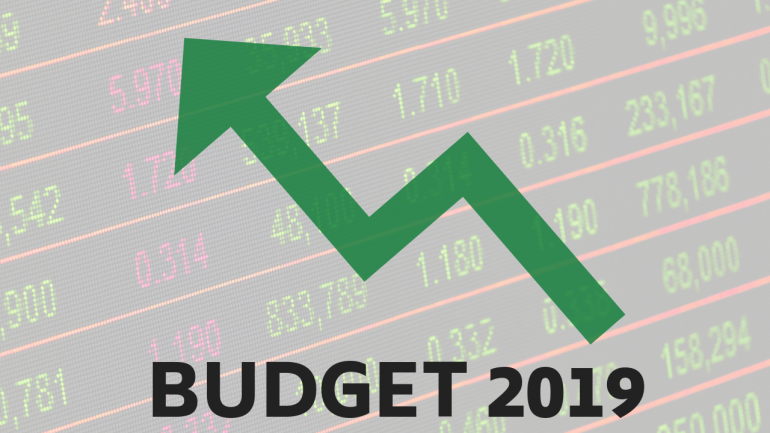By Diwakar Jhurani
The first full-time female Finance Minister of India had a tricky job while she prepared for this year’s full budget. Why tricky? Mainly for three reasons, 1) The Budget was supposed to be presented by the Finance Minister in less than 45 days of her appointment. For a country as large as India, this is some stiff deadline. Even schools give more time to kids to finish their summer holiday homework. 2) It was the 7th Budget under the same Prime Minister, which meant that there had to be an element of continuity in it. 3) It was the 1st budget after a historic re-election of Prime Minister Modi, which meant that people were expecting much more from it. If conditions are matched, then the last budget which was presented in the 6th year of a re-elected Prime Minister, was by erstwhile Finance Minister Pranab Mukherjee in 2009-10 (obviously with much less expectations). That was a difficult time for the economy mainly because of the global financial crises. However, from a Finance Minister’s perspective of writing a budget, 2009-10 would have been relatively clearer as the challenge was well defined. 2019-20 was slightly different- huge expectations because of the political mandate, economy on the right track, and no looming problems that can turn the tables. Hence, budget preparation in 2019-20 would have demanded much more creativity and focus on granularity.
In this context, one important way to judge Budget 2019-20 would be to test it on the single parameter of balancing continuity with disruptive ideas. Let’s start with continuity. A budget that comes in the sixth year of a Prime Minister needs to be based on his long-term vision. And this budget defines it clearly with 10 key themes of action, 1) Physical & Social Infrastructure, 2) Digital India, 3) Make in India, 4) Pollution-free India, 5) Water conservation & management, 6) Blue Economy, 7) Thrust on Space Exploration and Utilization, 8) Healthy India, 9) Food Security, and 10) Minimum Government Maximum Governance. Fiscal discipline of the government is another important metric that demands continuity. The Union Government has followed a downward glide path as far as gross fiscal deficit is concerned and this budget did so too, pegging it at 3.3% of the GDP. The third sign of continuity was to strengthen the already existing efforts of recapitalizing public sector banks. Continuing on this front is critical to ensure that credit is easily available to industrial enterprises which in turn boost economic activity and create jobs. And the budget did that, both for Banks and Non-Banking Financial Companies.
With the importance of continuity well emphasized in the budget, it did justice to the expectations of many, who saw this budget as a statement of Modi Government’s intent to transform India, especially after the historic electoral mandate. The most important disruptive idea was to set a target of making India a $5 trillion economy by 2024. This means zero compromise on a near 8% or more real economic growth rate. This also means no compromise on inflation and maintaining a stable exchange rate. In short, this target is more holistic that let’s say a target of double-digit growth rate. The second and very important disruptive idea was in the area of disinvestment. India had a policy of maintaining direct government stake of 51% in public sector undertakings. This budget changed that. The Finance Minister has proposed that “Government is considering, in case where the Undertaking is still to be retained in Government control, to go below 51% to an appropriate level on case to case basis. Government has also decided to modify present policy of retaining 51% Government stake to retaining 51% stake inclusive of the stake of Government controlled institutions”. This shows the government’s intent to move away from micro-management or interference in the way public sector organizations are run, ultimately minimizing the scope for corruption in future.
The third disruptive idea in this budget comes in the form of a statement of intent from the government towards taxpayers. It is important to remember that every Indian pays tax in some form or the other. The Finance Minister made it clear through an excellent analogy that both the economy and taxpayers are far better off when the government’s intention is not to over-exploit taxpayers through high taxes. This is very much in line with what has been repeated time and again in Hindu texts. For instance, the Chanakya Rajaneeti suggests that “The king should collect the treasure like a bee which does not injure the flower”. Similarly, the Mahabharata suggests that “An intelligent king [government] will milk the kingdom [country] like a calf that sucks milk. If the calf is nurtured, it becomes strong and can sustain hardships. A kingdom that has been milked too much is incapable of achieving anything great”.
If I were to use a cricket analogy then the first budget by FM Sitharaman was similar to a typical Rahul Dravid innings in a test match- balanced, technically-sound, adapted to the pitch and most importantly, with a clear focus on Team India’s victory.
(The Writer is a Young Professional with the Economic Advisory Council to the Prime Minister (EAC-PM). All views expressed are personal.)
(The views expressed are the author's own and do not necessarily reflect the position of the organisation)

